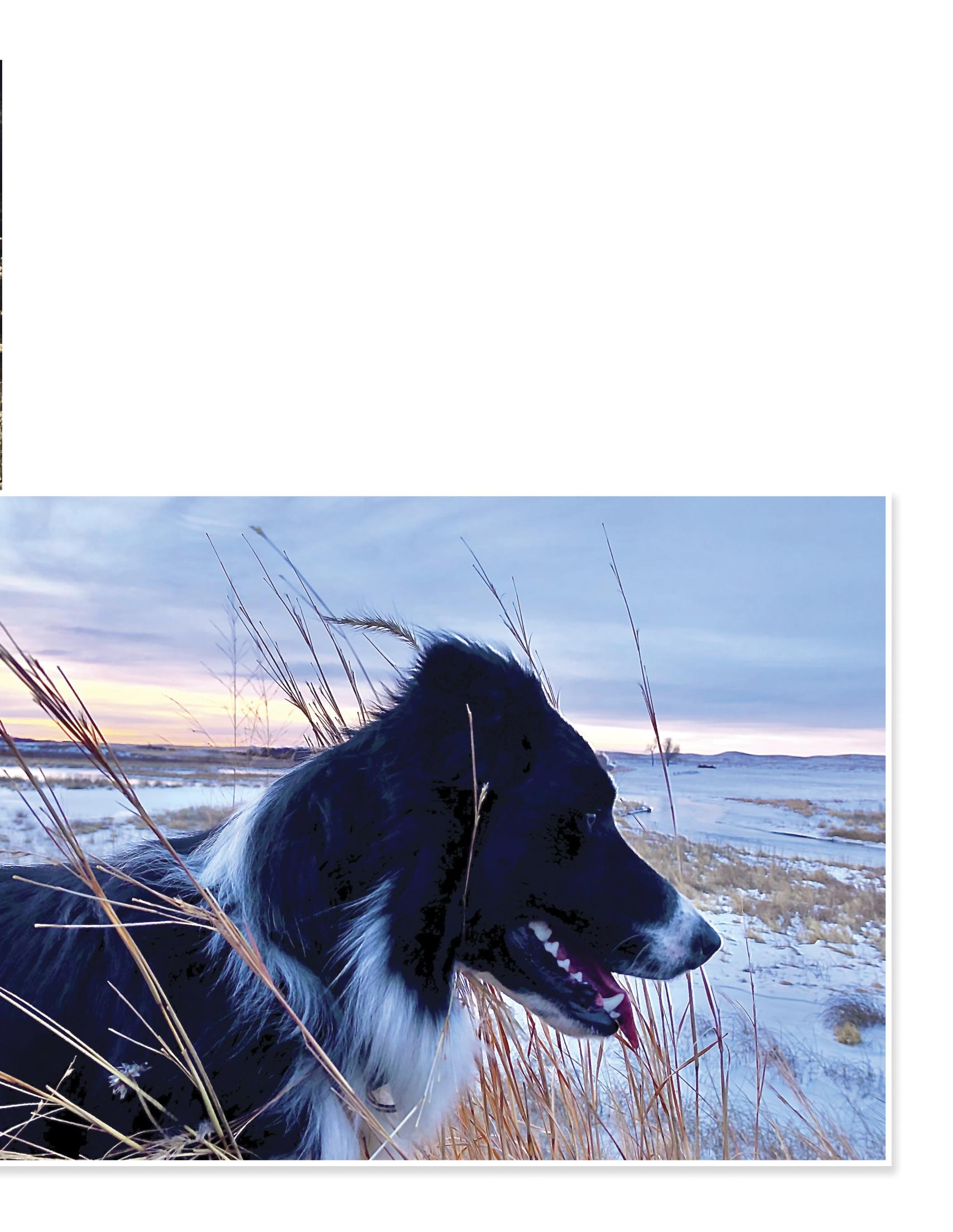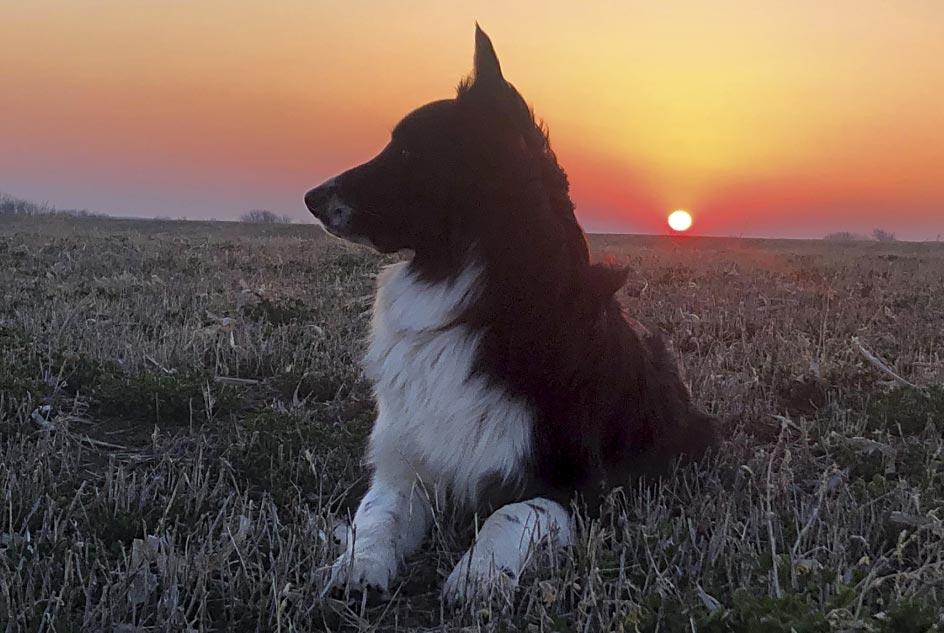
6 minute read
Taking Shape: Working with Adolescent Stock Dogs
By Audry Wieman, DVM, Ridgeline Vet Services, Production Animal Consultation
While they do not walk around with acne and braces, the teenage phase for dogs can be just as awkward as that of their human counterparts. Between the ages of 5 months and 18 months, a dog undergoes asynchronous physical development and mental development. Having traded their puppy fluff and waddle for a shiny coat and gangly legs, young dogs often have the appearance of an adult animal but lack experience and confidence that come with age. This dichotomy can often create consternation for their owners but also opportunities to develop a reliable companion. Understanding what is happening to an adolescent animal can help train an effective and adaptable dog around a stock operation.
Advertisement
It can be difficult to reconcile a dog that looks fully grown but lacks the ability to regulate their emotions and instinctive behavior. While many dogs have grown into their adult frame by 9 months of age, they exhibit behaviors that are inappropriate and sometimes inexplicable. One of the most common behaviors that occurs is chasing. A significant trigger from the stalk is tracking lateral motion. This action is where something moves across the eyeline of the dog from left to right or vice versa. A swishing tail, a child running, or a vehicle tire rolling by are all primers for an instinctive reaction. Common targets include moving vehicle tires, horse tails, children, or cattle. In the adolescent timeframe, dogs are honing their predatory chase techniques, also known as impulse control. Dogs practice rating the risk of a scenario, gauging the distance to prey, and calibrating the timing of the attack with the dispersal of a large reserve of physical energy.
The results of these early encounters take root in the immature brain and help to determine how to handle their next experience. The lessons a dog learns from their early exposures often drive their behaviors for a lifetime. By noticing the stalking motion of dogs, this behavior can be harnessed and directed towards a mutually beneficial function. Young dogs need opportunities to allow their developing mind to catch up with the physicality of their bodies. While it would be nice to think that a dog would ‘get it’ without intervening with training, the reality is that it takes many mistakes to develop skills. Arranging the environment for a young dog will help streamline the learning process, minimize collateral damage to others and the dog itself, and create desired behaviors.
Know what action you want to see.
Before training your dog, you must know what behavior you want to see. Decide if you want the dog to sit or lie down. Decide what you want to see when you release the dog from the cue. If your dog lays down as the cattle goes by, when do they get up and where do they go next? Think through the entire scenario before you ask your dog for behavior.
Manage the environment.
Rather than trying to limit the dog’s actions, manage the environment in which they can learn to appropriately use their instinct. It follows the adage of “make the right things easy.” Start with your dog in a small space without many distractions. This situation allows control over the environment that the dog can focus on while training. Many horse trainers start colts a round pen. It is safe, just enough space, and entering it is a cue that they are going into a learning environment. Create a similar focused location to work with your young dog.
Engage connection.
Begin by engaging the dog with something that gains their attention. This could be some skills they already know – something that promotes focus and a little motion like recalls or a game of retrieve. With cattle, when we gather, we approach the herd and allow them time to get up, stretch, find their calf, and orient to the situation before asking them to move. For dogs, engagement orients them to a training session and increases the focus on you.
Start small and get it right.
When developing understanding for your dog, start with a slow-moving target for a short distance. An old rope, a horsehair drag, or simply a person walking across the eyeline can be a good place to gauge a starting point. Once they respond with the correct behavior, then the difficulty can be graduated to varying intensity, duration, or targets. Progressions in this manner of reinforcement build confidence, resilience, and the ability to delay gratification throughout the working session.
Reinforce what behavior the dog should do.
If your dog accomplishes the behavior, the reinforcement should be well-timed. Rewards can be praise, petting, permission to get the target, treats, or a play session away from the target. In the case of impulse control, asking a dog to restrain their physical energy is best rewarded with allowing them to disperse it on an appropriate mark. Once the dog understands the basics, then the reinforcement can be the next cue or command that you want them to perform. If a dog breaks their behavior, simply reset your dog and adjust the environment by slowing the movement or reinforcing earlier to create a correlation with what your dog is supposed to be doing, rather than correcting inappropriate behavior.
Test the understanding.
Integrate the training into the daily routine. Start the day with a quick reminder or warm up, then continue with your routine. Two to three minutes to start the day and acclimate expectations is often enough. Think about the distance from the dog to the target and the dog to you. Observe where the criterion for the behavior deteriorates. If they overstretch a boundary, work a little further away from the cattle until the dog attends to you. Remember that verbal cues are not a dog’s first language, so repeating a cue more than twice is probably indicative of a training limit.
Young dogs have great potential, which often carries great expectations. In addition to testing their limits, an adolescent dog’s brain is still growing which means that its memory may be inconsistent. What is true for them one day may not be repeated the next morning. Practicing a short time every day in different situations can strengthen the memory of a dog’s behavior. Young dogs learn quickly and advance their abilities daily. What they learn is up to those they interact with and the responses the dog receives for the behavior they exhibit.
Audry Wieman, DVM lives in northeast Nebraska and has integrated behavior consulting into her mixed animal private practice. She has consulted across the nation and enjoys exploring the why and how-to in partnering animal behavior with owner lifestyles. For more information, questions, or topic suggestions, visit her website at www.ridgelinebehaviorvet.com or email her at audry.wieman@pacdvms.com.











